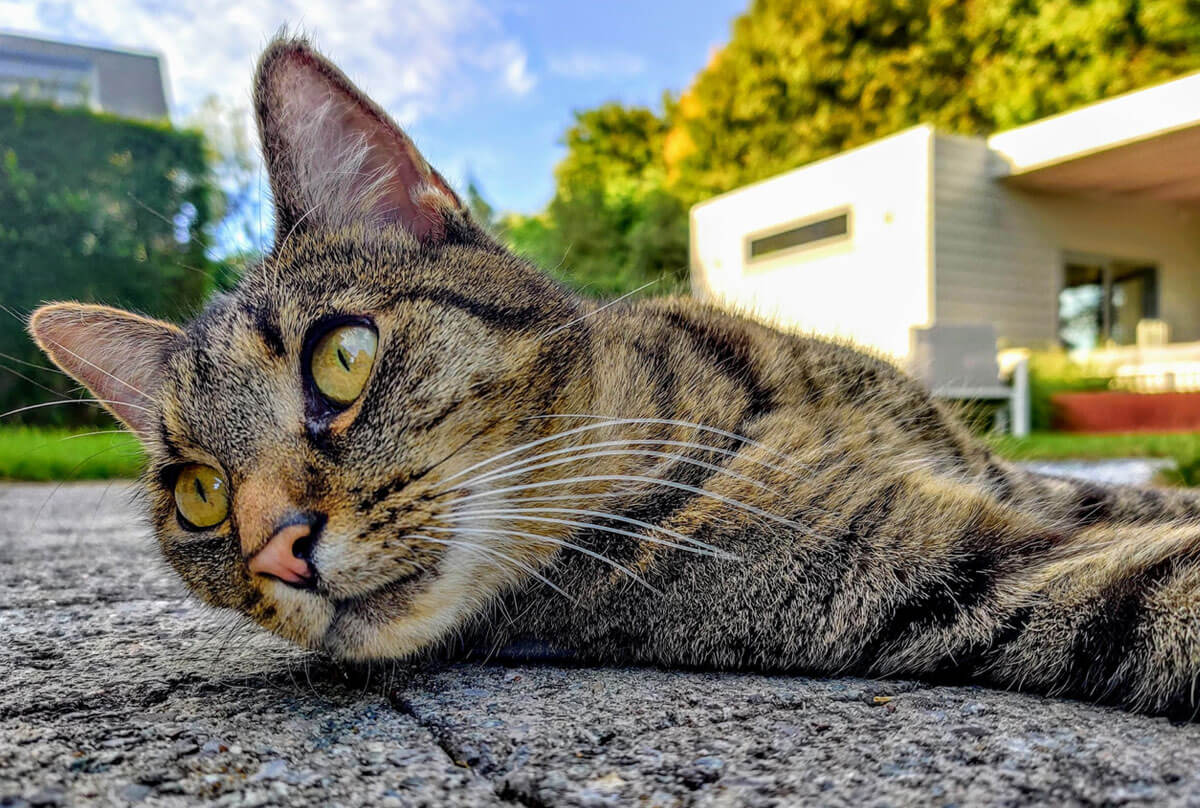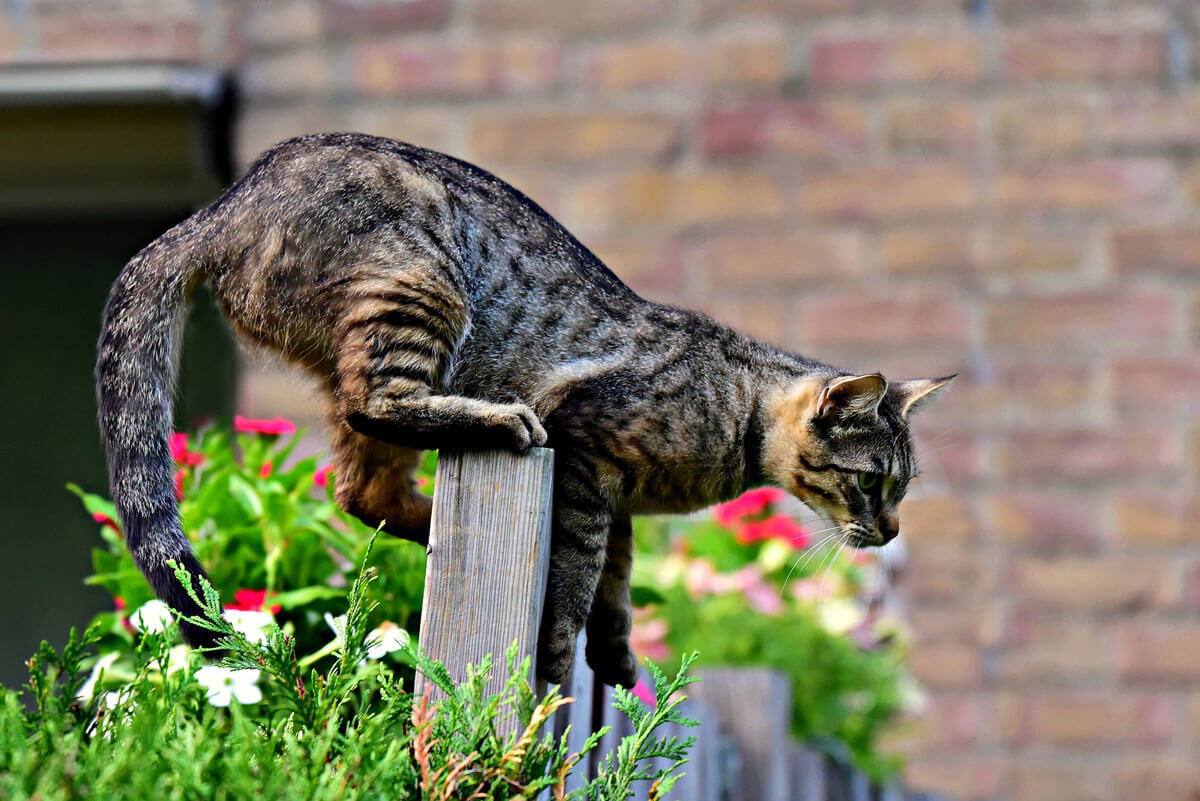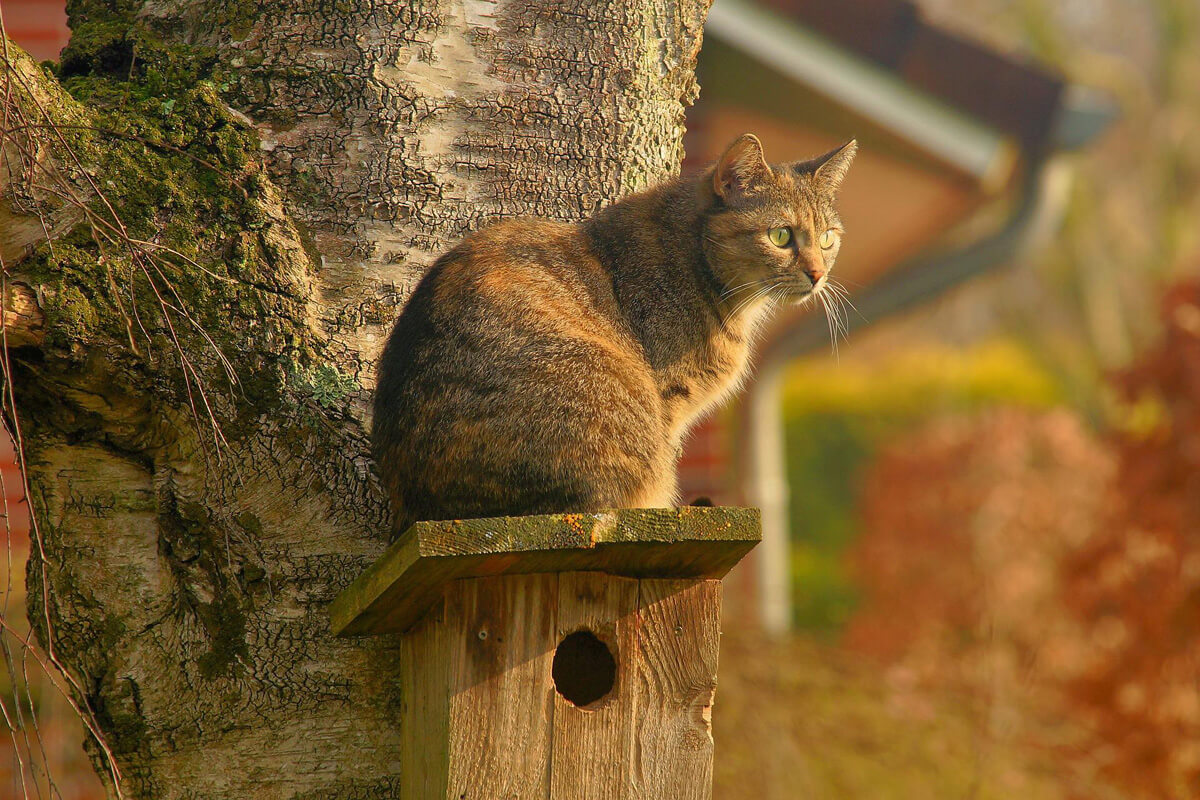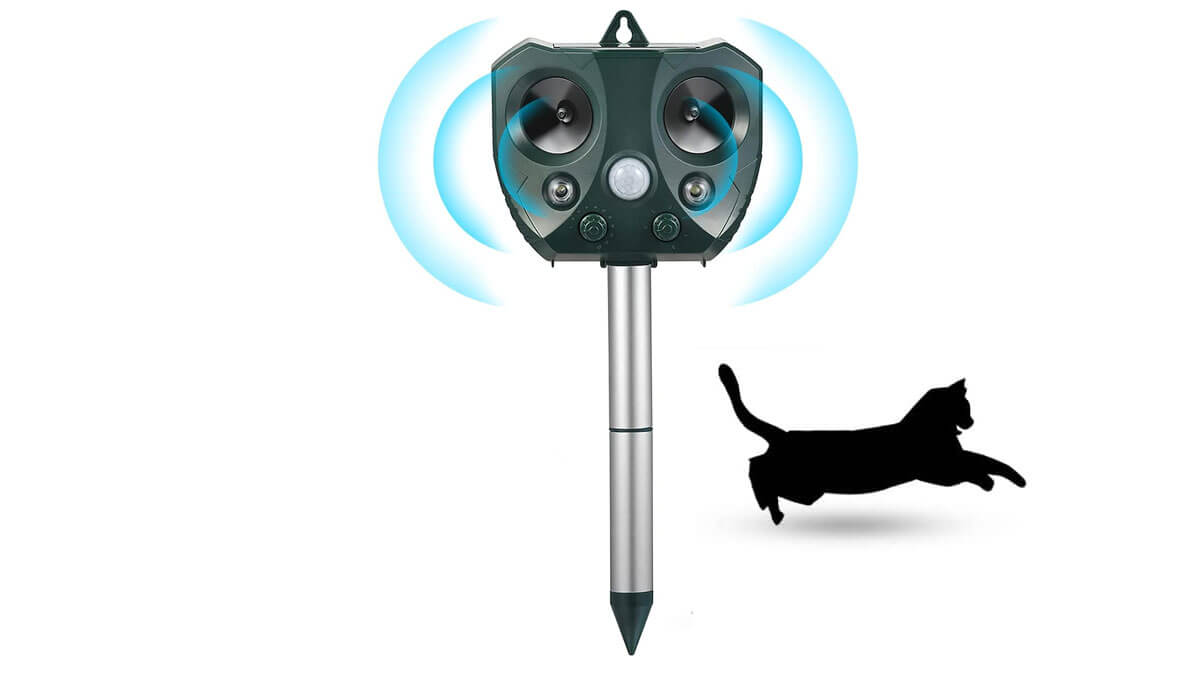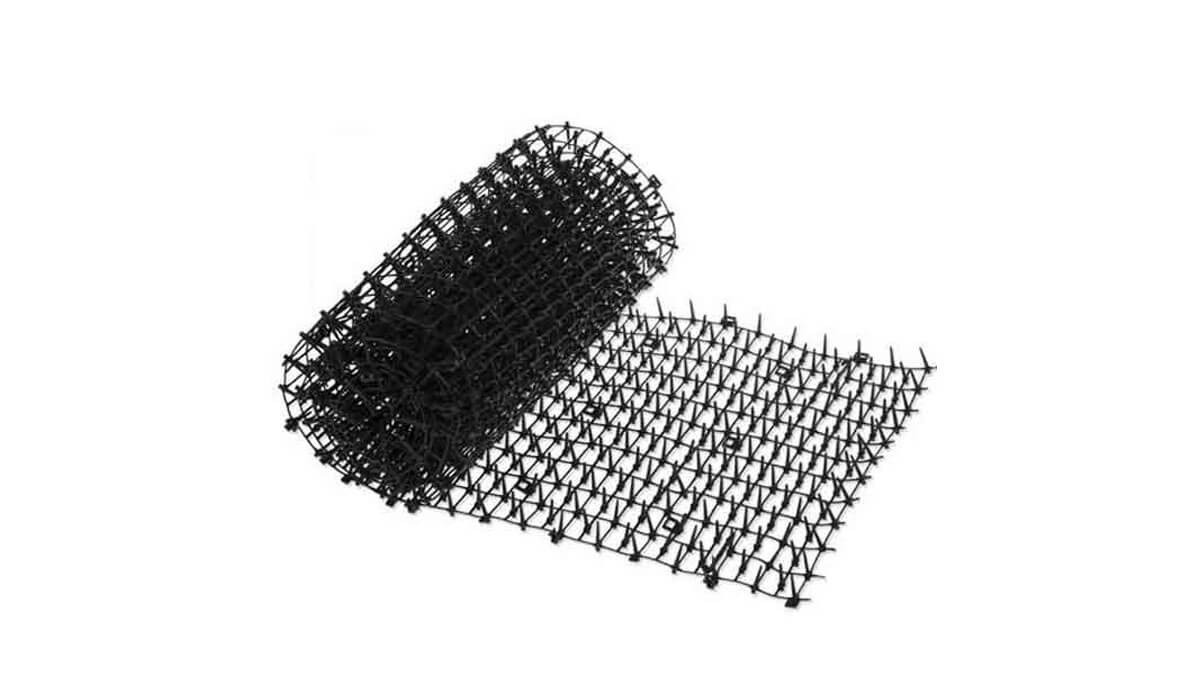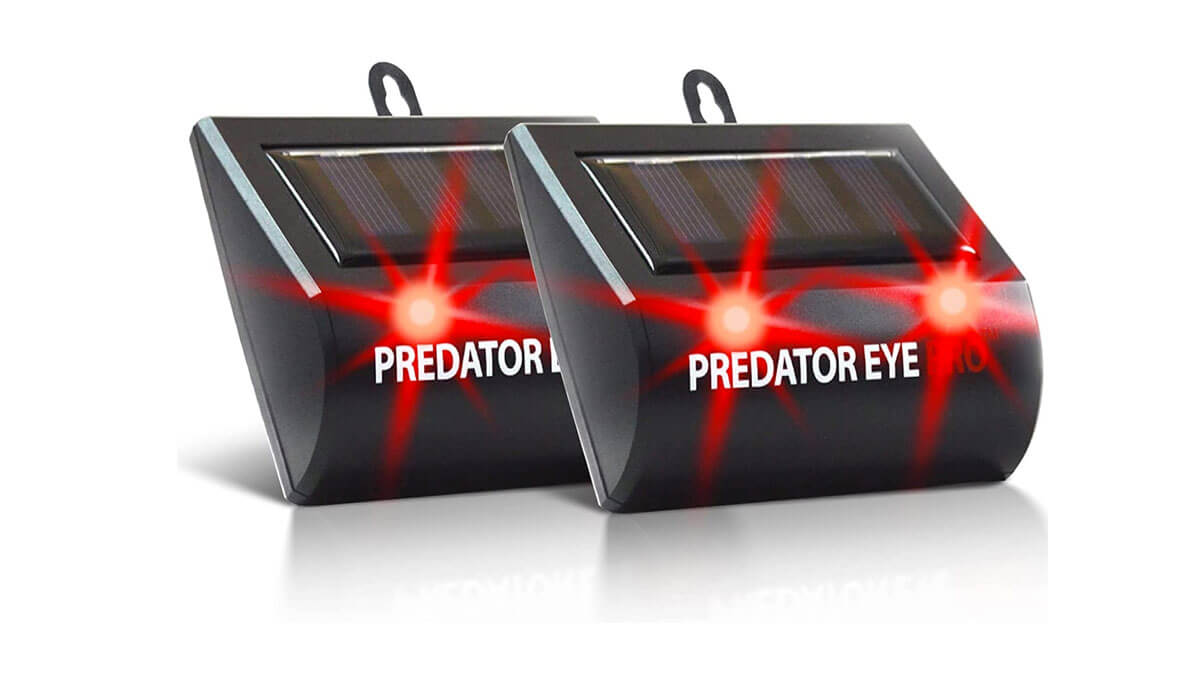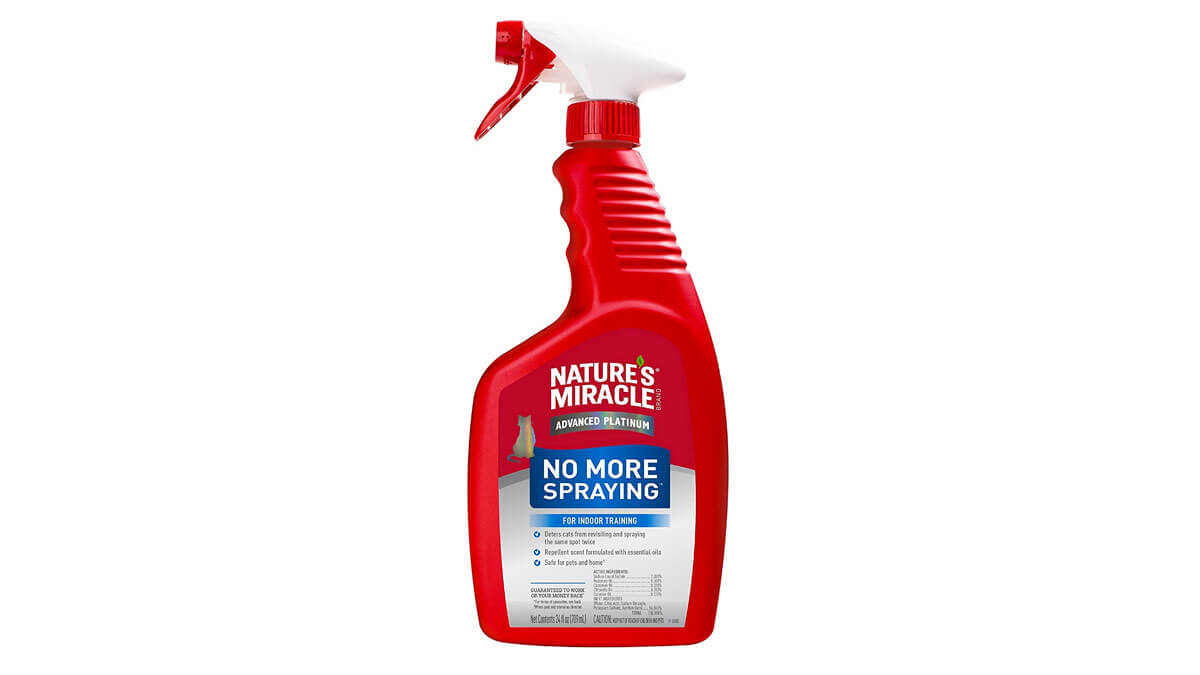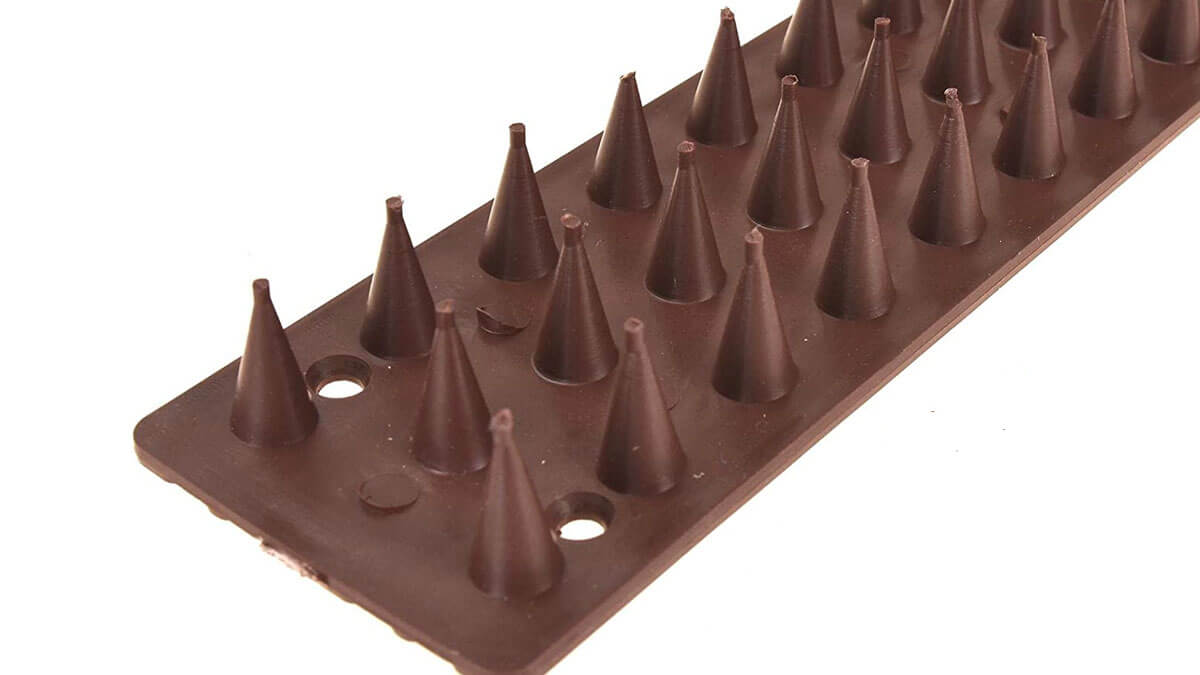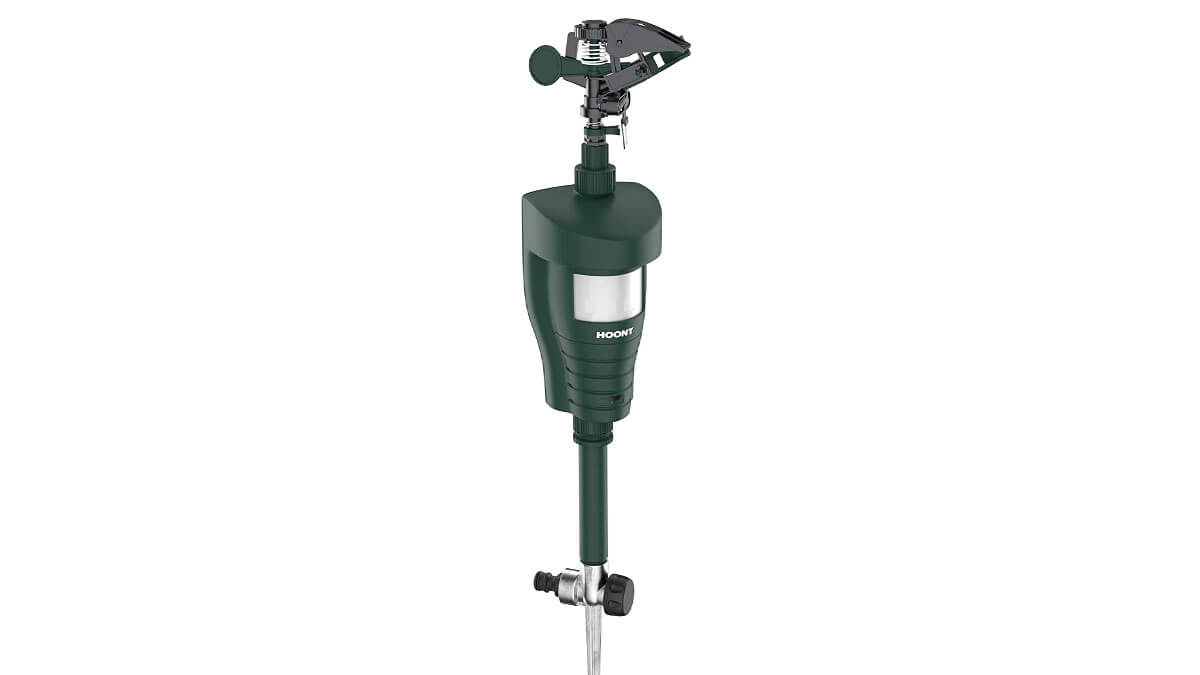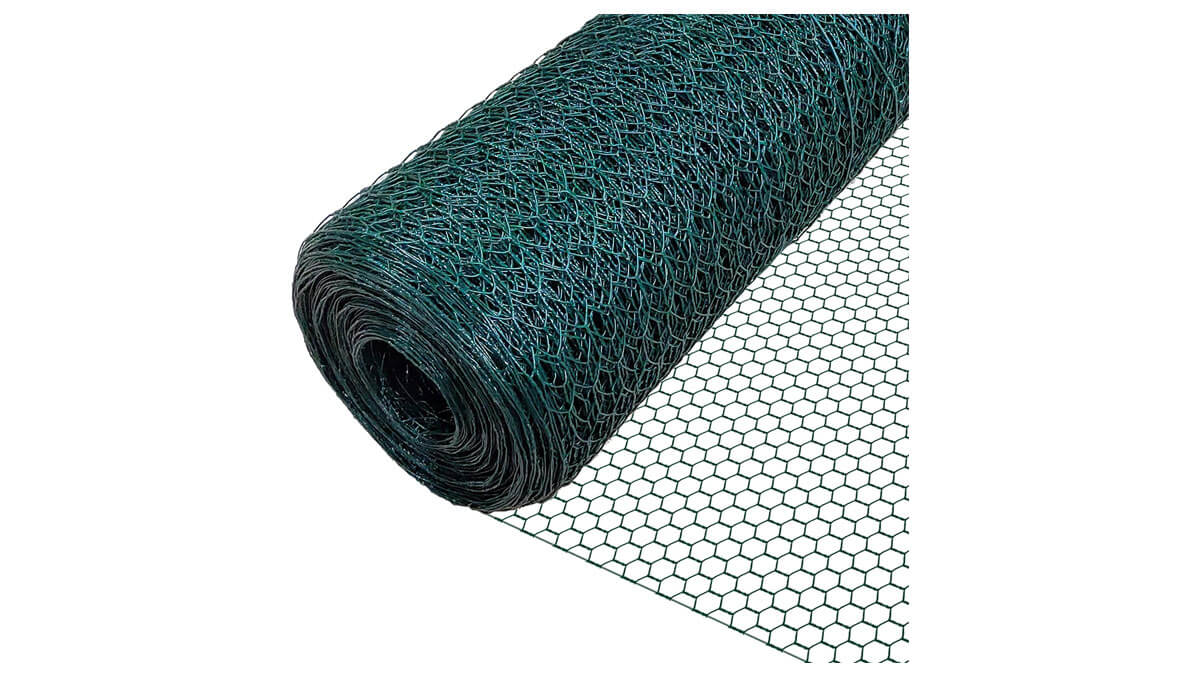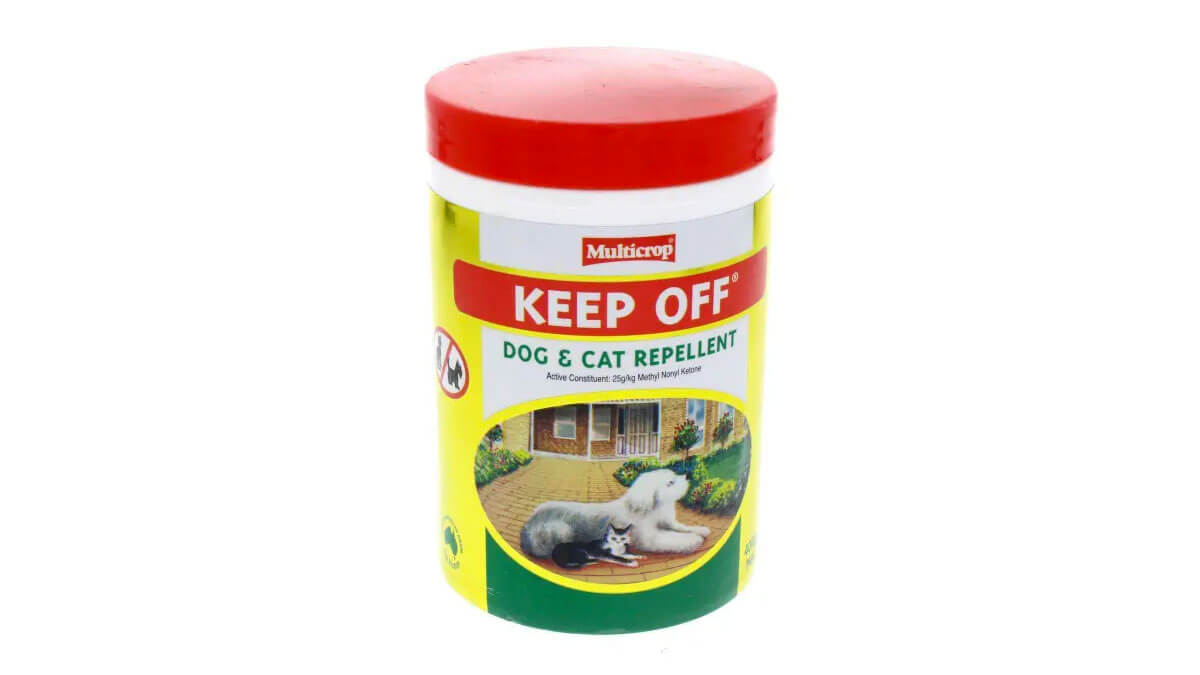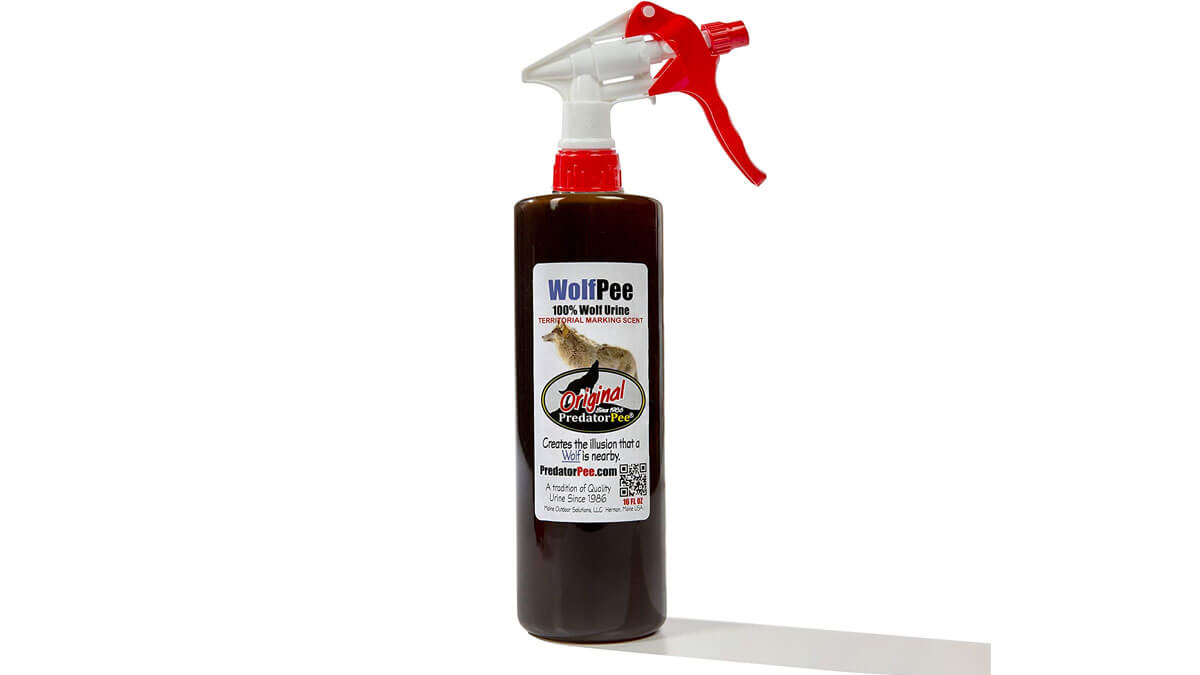The Top 10 cat deterrents to keep cats away from your yard – Australia
Have you had enough of the cat problems in your yard, like pooing or killing birds and mammals? Are you desperate to find an effective solution to do something about it and protect your property?
There are up to 11 million domestic and feral cats in Australia, so it’s no surprise that intruding cats are issue that affect huge numbers of people across the country.
That’s why in this article, we’ll discuss:
- Why domestic and feral cats in Australia are such a problem
- The 3-step plan you can follow to successfully keep cats away
- The 10 best cat deterrents and how to maximise their effectiveness
The issue of cat poo
“Toxoplasma gondii reproduces in the guts of cats. Millions of eggs get released via the cat faeces. Animals and people can pick up those eggs accidentally because they’re in the soil. They’re in your gardens, they’re in children’s sandpits, they get onto the surface of vegetables. People can also get sick by eating meat from infected livestock.”
Professor Sarah Legge, Australian National University, Canberra
A huge complaint that many Australians have when it comes to cats is the amount of smelly faeces that they deposit in the yard.
For any keen gardener, it’s a real annoyance to discover that a local cat has been using your lawn, flowerbed or patio as a litter tray.
Cat poo smells bad and can’t really be used as compost, so you’ve no choice other than going around your yard, scooping it up into poop bags and disposing of it in the garbage bin. Not pleasant and actually quite frustrating if you just want to get on with cutting the grass!
Even more importantly, cat poo contains the Toxoplasma gondii parasite, which can lead to a Toxoplasmosis infection in humans, pets and a whole range of mammals.
Symptoms can range from nothing at all, to mild flu, to miscarriages, to death, making the outcome of an infection incredibly unpredictable.
In 2020, a study by the Australian National University estimated that 8,500 Australians are hospitalised every year due to cat-dependent diseases, the most common and serious of which is Toxoplasmosis.
The study also suggested that the Australian economy takes a massive hit of up to A$6 billion annually due to the costs associated with Toxoplasmosis infections and Bartonella henselae bacterium, which causes Cat Scratch Disease.
There are around 8 million domestic and feral cats in Australia, and you’ll have no idea of the state of the gastrointestinal health of the local cats that like to defecate in your yard.
Regular hand-washing after being outside is the best prevention against Toxoplasmosis, but this is not always possible with young children and of no help to your pets.
Therefore, it’s completely understandable why you might want to take action to keep cats away from your property, and we’ll get to that shortly.
“Australian marsupials, such as the eastern barred bandicoot, are particularly vulnerable to toxoplasmosis, a disease spread by cats. Toxoplasmosis can infect any bird or mammal and can result in anorexia, lethargy, reduced coordination, apparent blindness, disorientation, breathing difficulties, jaundice, fever, abortion, and death.”
Western Australia Feral Cat Working Group (WAFCWG)
The mammal predation issue
“Sadly, Australian wildlife, like endangered numbats and night parrots, have proven particularly susceptible to feral cats and roaming pet cats. Cats are the perfect hunter, being patient, silent and adaptable. Not only are so many of our native animals the perfect-sized prey for cats, they’re also at a big disadvantage since they aren’t used to being hunted by something like a cat.“
The Invasive Species Council, Australia
According to a research article published in 2022, cats are responsible for the deaths of a huge number of animals in Australia every 24 hours:
- 2.92 million mammals
- 1.67 million reptiles
- 1.09 million birds
- 2.97 million invertebrates
- 260,000 frogs
Additionally, the Invasive Species Council of Australia believe that cats have had a substantial role in the extinction of 27 native species since cats were introduced to the country in 1788. The ISC states that over 100 other species are currently under threat primarily due to cats.
These are all clearly huge numbers, so it’s little wonder that there have been many calls for all states to implement cat containment laws for domestic cats, and for land managers to legally be able to use the full suite of tools for controlling feral cats.
If you’ve had enough of destructive cat behaviour in your yard, then you have to make use of the best (and legal) deterrents available to minimise your cat problem, which are discussed below.
3 steps to deterring cats
Before we jump into the list of top products to keep cats away, let’s consider your yard and what you can do to make sure any deterrents you use are effective.
It doesn’t make sense to waste your time and money on products that don’t actually solve the problems caused by the pesky cat.
To help you get the best results from your deterrents, here’s a simple 3-step plan you can follow to tackle the cat issues in your yard and other areas you want to protect.
These steps outline a clear strategy to use your chosen cat deterrents with a specific goal in mind, so you can finally put an end to the cat problems that have been bothering you.
Step 1 – Discover where the cat enters your garden
Here’s an important thing to know about cats: they really don’t like changes in their surroundings. If you’ve ever had a cat, you know how they dislike it when something in their environment is different, like a new piece of furniture or a noisy child.
You can use this knowledge to deal with cats that come into your yard.
Up until now, these cats have probably been entering your yard without any problems and doing whatever they want. They will keep doing this unless you do something to stop them and give them a reason to think twice about coming to your place.
Cats are creatures of habit, so they usually come into your yard through the same spot every time. That’s good news because it makes it easier for you to figure out where they’re getting in.
Finding their entry point gives you a big advantage in your efforts to prevent them from causing long-term problems.
The entry point is important because it’s the best place for you to influence the cat’s decision to enter your property or not.
If the cat doesn’t see, smell, hear, or feel anything strange or threatening, it will happily come into your yard like it always does. That’s probably how the cat sees your garden right now, which is why it keeps coming back.
But if you use effective deterrents at the entry point, you’ll activate the cat’s natural instincts the moment it tries to come in. This will make the cat feel suspicious, uncertain, and uncomfortable, and its brain will tell it, “No, this seems too risky, I better not go in.”
Focusing on the entry point is a smart move because it stops the cat before it has a chance to make a mess, harm birds, or do other things that you’re tired of.
You’ll make the entrance to your yard feel unwelcoming and disrupt the cat’s usual routine. The more uncomfortable it feels, the less time the cat will want to spend in your yard.
Step 2 – Use several deterrents
Cats are remarkable animals with extraordinary senses, especially when it comes to hunting. Unfortunately, this poses a threat to birds and small mammals.
Cats have exceptional vision, surpassing humans in low-light conditions and detecting even tiny movements on the edges of their vision.
Their hearing is also incredible, allowing them to locate prey with great accuracy. Cats can hear sounds across a wide range, including ultrasonic frequencies that mice, bats, and other small rodents produce.
In addition, cats have an impressive sense of smell. Their noses are designed to capture scents, and they even have a special “flehmen response” that lets them further analyse smells through a duct in their mouth.
Highlighting these feline abilities emphasises how cats rely on their senses and instincts for every aspect of their lives. To effectively reduce cat problems, it’s beneficial to use a variety of deterrents that target different senses.
For example, using two scented cat repellents in your yard will trigger the cat’s sense of smell, which is a good start and more effective than doing nothing.
However, if you add an ultrasonic deterrent alongside the scented one, the cat will receive warning signals through both its ears and nose. It will perceive potential danger, discomfort, or confrontation from two different senses.
A cat that receives alerts from at least two instincts, signalling that your yard might be risky, is more likely to be convinced that it’s best to avoid visiting your yard.
Step 3 – Remain persistent and patient
When you’re trying to keep cats away from your yard, it’s important to remember that some cats are easily scared and will run away, while others are more bold and persistent. This behaviour can depend on the individual cat and how much interaction it had with humans when it was a kitten.
There are cats that will flee at the slightest sign of confrontation. On the other hand, there are cats that will keep coming back and take longer to understand the message.
Keep in mind that a pet cat has a comfortable home to retreat to, while a stray cat needs to take more risks to survive.
If you assume that you’re dealing with the most daring, confident, and persistent type of cat, you’ll set realistic expectations and feel more satisfied when you achieve success.
Clearly, your yard has caught the attention of the neighbourhood cats, and you need to give them a reason to see your yard differently.
A dominant cat won’t just disappear after a single bad experience. It will take multiple negative encounters for the cat to realise that your property is no longer a safe place.
Using a cat deterrent product only once will make the visiting cat think it was just a temporary inconvenience, and it will quickly return to intruding your yard. However, if you consistently use a cat deterrent, the cat will soon realise that your yard has become unpleasant, unwelcoming, and uncomfortable permanently, and it won’t want to spend time there.
Successfully repelling cats is not an exact science, and it doesn’t happen instantly. But by being patient and persistent, the cat will reconsider your yard as a place that is irritating, unsafe, and unpredictable.
Ultimately, the actions you take to bring about this change in attitude will lead to a reduction or even complete elimination of the cat-related problems that have been causing you frustration.
The Top 10 Cat Deterrents Australia
If you’re dealing with issues like persistent pooing, bird hunting, dog over-excitement, or even cat bullying in your yard, don’t worry! We’ve got you covered.
In the list below, we’ve gathered the best cat deterrents that target different senses like hearing, touch, sight, and smell. You’ll find a variety of options to suit your unique yard, problem, and situation.
Feel free to try more than one deterrent on the visiting cats. Cats rely on their instincts, so the more senses warning them about the area, the better your chances of success.
Rest assured, all the deterrents listed here are humane and won’t harm the cats. Remember, that annoying cat might be someone’s beloved pet, so let’s stick to calm and considerate methods of cat control.
We wish you the best of luck in achieving positive results in your yard! Keep reading to find the perfect solution for you.
As an Amazon Associate this website earns commissions from qualifying purchases. We really appreciate your use of our affiliate links if you have found the information on this page helpful as it helps keep the site running!
1. Solar Ultrasonic Animal Repeller
A motion-activated repeller that effectively and humanely deters cats from the area using high-pitched noises.
Using an ultrasonic device is a highly effective way to automatically protect your yard from cats.
When a cat enters the detection zone, the device detects its motion and emits high-pitched noises that annoy the cat and make it leave the area.
With time, the cat learns to associate your yard with these irritating noises, leading to fewer visits and less time spent in your garden, reducing unwanted behaviours like pooping or harming birds.
Unlike other deterrents like sprays, ultrasonic devices require no manual application. They do all the work for you, consistently deterring cats day and night, whether you’re home or away.
This solar-powered ultrasonic repeller is designed to deter multiple animals, but its standout feature is the ability to adjust the frequency of the high-pitched noises it emits. By setting the frequency to 20 – 25 kHz, which is the optimum level for deterring cats, you should shortly start seeing a reduction in their nuisance behaviour.
2. Scat mat prickle strips
Plastic spikes that prevent cats from pooping or digging in flowerbeds, borders, or potted plants, that don’t cause injury.
Many people find it frustrating when cats use their flowerbeds or vegetable patches as litter boxes. Luckily, there’s a simple solution to protect these areas and prevent cats from soiling them: prickle strips, also known as scat mats or dig stoppers.
Prickle strips are rows of plastic spikes arranged in a grid pattern. They can be easily placed on the affected areas and secured with metal tent pegs or stakes.
Cats have sensitive paw pads, so walking on these prickle strips feels uncomfortable and awkward for them. The spikes are designed to be uncomfortable without causing any harm to the cats. When your flowerbed becomes an unpleasant surface to walk on, cats will be deterred from using it as a toilet.
What’s great about prickle strips is that they are flexible and can be easily cut to fit odd-shaped areas or to prevent cats from climbing. You can wrap them around trees, attach them to fences, place them on outdoor furniture when not in use, or even use them on bird tables or any outdoor surface you want to keep cats away from.
While installing prickle strips won’t completely stop cats from entering your yard, you should notice an immediate reduction in the pooping problem. As your yard becomes more challenging for cats to navigate, they may lose interest and spend less time in your yard as a result.
3. Predator Eye red flashing LEDs
These red night lights flash to deter cats by imitating the eyes of a rival animal.
Predator Eyes are a simple way to scare cats away from your garden at night. These devices create the illusion that they are being watched, making cats feel threatened and causing them to leave.
You can easily hang them on a wall or fence, and the two red flashing LEDs are surprisingly bright. To avoid being distracted, position them away from your sightline. Make sure to install them at a height similar to a cat’s level.
The Predator Eye units are solar-powered and have a light sensor. They charge during the day and start flashing at night to deter unwanted cats. However, it’s important to use them alongside other deterrents, as they are not effective during the day.
Don’t rely solely on Predator Eyes for cat deterrence. Remember, cats are mostly active at night, so consider using them as an additional tool to keep cats away.
4. Outdoor water pistol
This water gun features a sleek, flat design and a convenient handle for quickly squirting and deterring unruly cats.
If you want a simple way to keep cats away, a water gun can do the trick. When you see a cat misbehaving in your yard, just give it a spray with the water gun, and the cat will run off because it doesn’t like getting wet.
The Team Magnus water gun is discreet and doesn’t look like a kid’s toy that you’re sneakily borrowing for scaring cats. It’s easy to grab with its quick-grab handle, and it can reach up to 10m, perfect for small yards, porches, or decks.
Its flat design allows for convenient storage when not in use, unlike typical water guns for children that end up on the floor or propped against a wall.
Keep in mind that you need to be present to use the water gun since it relies on catching cats in the act. Ideally, a deterrent should work even when you’re not around, but a water gun is effective for small-scale cat problems.
5. Nature’s Miracle cat repellent spray
A cat training spray which contains essential oils that naturally repel cats from doing their business in particular areas.
Repellent sprays are an easy way to keep cats away from specific areas of your yard. They work by using scents that cats don’t like, teaching them to stay away from unpleasant-smelling spots.
The mixture of essential oils contained within Nature’s Miracle includes citronella, rosemary, cinnamon and cornmint – all of which cats have a natural aversion to and will do their best to keep away from. The non-toxic formula mean this spray can be used without fear of harming plants, wildlife, or pets.
Nature’s Miracle spray is actually labelled ‘for indoor use’, but due to the active ingredients, it’s also useful outside for hard surfaces like decks, patios, porches and other common areas where cats like to pee or poo.
It’s important to spray quite intensely every day for the first week, so that the cats really get the message that they should keep away from the area you want to protect.
6. Anti-climb spikes – wall and fence
Plastic spikes that create obstacles along fences, walls, and flat surfaces, preventing cats from easily entering your yard.
Cats are great at balancing and can easily walk along narrow ledges on your fence or wall to enter your garden. To make it harder for them, you can attach spikes to these ledges.
These spikes, made of durable plastic, are not meant to harm cats but apply pressure to their sensitive foot pads. This creates an obstacle course that makes it challenging for cats to navigate.
You can secure the spikes using screws, nails, or outdoor adhesive, and they can be easily cut to fit.
When cats find it difficult and require a lot of energy to enter your yard, they are more likely to give up and look for an easier yard to access elsewhere.
7. Motion-activated water sprinkler
A water sprinkler with a motion sensor that frightens cats by shooting powerful jets of water towards them.
Motion-activated sprinklers, also called ‘water scarecrows,’ are a simple way to keep cats away. You connect it to a garden hose, and whenever something passes the motion sensor, it shoots out a jet of water.
The forceful water and the noise scare cats away, which can providing amusement for many people the first few times they see it in action. However, it’s important to note that the sprinkler can also spray anyone, including yourself, children, dogs, or elderly relatives, who enter the detection zone.
The Hoont Sprinkler runs on 2 AA batteries and has sensitivity controls, but it’s recommended to turn it off when you’re using the garden to avoid getting sprayed.
8. Chicken wire
A flexible wire mesh that can be installed horizontally or vertically to prevent cats from entering specific areas of your yard.
Chicken wire is a traditional method to prevent cats and other animals from accessing unwanted areas.
You can use it vertically to create a small fence around flowerbeds, borders, potted plants, and vegetable patches. If you bend the top of the wire inwards, it will discourage cats from jumping over it.
Alternatively, you can lay it flat to stop cats from digging in the soil or using it as a litter box.
Chicken wire comes in different hole sizes. Smaller holes are great for vertical installation and plant support, while larger holes allow plants to grow through and make it easier to remove the wire without damaging the plants.
9. Keep Off repellent crystals
Scented deterrent granules for sprinkling in areas where cats have been fouling.
Keep Off is excellent for use if you have a problem with cat poo on your lawns, paths or flowerbeds. It’s a granule-jelly that can easily be put onto the ground or mixed into soil.
The poo must be removed before applying and you will need to use it several times in order for it to be effective.
The active ingredient is Methyl Nonyl Ketone (MNK), which occurs naturally in fruits such as strawberries, guava and bananas and has a very strong smelling odour when extracted.
MNK is a common component of many scent-based animal deterrents as it gives off a smell similar to citronella, which cats really dislike.
Keep Off is a simple and straightforward deterrent that can work really well in stopping cats from pooing or urinating in problem areas in your yard.
10. 100% Wolf Pee
Pure urine collected from real wolves that replicates scent-marking and gives the impression wolves (or dingos) are in the area.
Wolves belong to the Canidae family, which also includes dogs, and they are known to be natural enemies of feral and domestic cats. The closest animal Australia has to a wolf is a dingo, which recent studies have suggested is a biological intermediary between a wolf and a domestic dog.
Due to their pack hunting behaviour, when a cat catches a whiff of a ‘wolf’, it tends to believe that there are more wolves nearby. This perception makes the cat want to steer clear of the area and avoid any potential conflicts. This is why wolf urine is considered a highly effective deterrent for cats.
To create the illusion that your yard is frequented by some sort of feral canine, you can spray wolf urine in the areas where cats usually roam and on other prominent spots around your garden or property.
For those who are squeamish, the idea of spraying 100% wolf urine might be off-putting due to its strong smell. However, if you can tolerate the odour, this method can be remarkably successful in keeping cats away.
It’s important to note that the wolf urine should be sprayed regularly to maintain its strong and effective scent. Over time, and especially in heavy rain, the potency of the scent will diminish, so you need to periodically renew the application of this deterrent.
By using wolf urine strategically, you can discourage cats from entering your desired areas. Just keep in mind that this method requires ongoing maintenance to ensure its continued effectiveness.
RESOURCES
Some of the resources below may contain affiliate links, which means we receive a commission (at no extra cost to you) if you use that link to make a purchase. We appreciate your use of these links as it helps to keep this website running! Thank you.
All cat deterrents mentioned in the article are available via the affiliate links below:
- Solar Ultrasonic Animal Repeller [aff]
- Scat Mat Prickle Strips [aff]
- Predator Eye Red Flashing LEDs [aff]
- Outdoor Water Pistol [aff]
- Nature’s Miracle Cat Repellent Spray [aff]
- Anti-climb Wall & Fence Spikes [aff]
- Motion-activated Water Sprinkler [aff]
- Chicken Wire [aff]
- Keep Off Repellent [aff]
- 100% Wolf Pee [aff]
Further reading:

